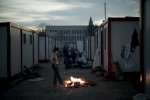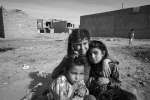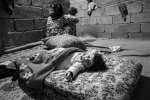- Text size
 |
|  |
|  |
| 
- Français
Teenage asylum seekers need better treatment in Central Europe, UNHCR project finds
News Stories, 4 June 2009
VIENNA, Austria, June 4 (UNHCR) – As more and more teenagers seek refugee status on their own in Central Europe, they are finding that asylum systems which cope well with adults do not always adequately meet their needs.
That's one of the chief findings to emerge from the first eight months of the largest project UNHCR has ever carried out – with co-funding from the European Union – to improve asylum decisions in eight Central European countries.
"I was really struck by the fact that Germany had more than 3,000 unaccompanied asylum seekers last year under the age of 18," said Natasa Hrncarova, a UNHCR officer who is evaluating the work of asylum officers making decisions in Slovakia. "That's more than three times as many asylum seekers – of all ages – as Slovakia had in 2008."
Hrncarova was speaking after a recent conference in Vienna where evaluators from Austria, Bulgaria, Germany, Hungary, Poland, Romania, Slovakia and Slovenia took stock of the progress achieved since September 2008.
The other main findings were that asylum seekers urgently need simplified legal information in their own languages to understand the complexities of EU asylum law and its implications for their own future, and that more attention needs to be paid to the professional standard of interpretation at every step of the process.
Under the project, now at the half-way point, evaluators have been listening in on refugee status determination interviews and analyzing files to detect weaknesses in first instance decision-making.
Their findings were used to prepare recommendations tailor-made for each country. Those include workshops, tutoring programmes, practical guidelines and checklists for asylum officials that can immediately improve procedures and the quality of decisions.
At first, asylum officers were apprehensive as evaluators shadowed their interviews and reviewed their files. But gradually adjudicators realized the evaluators are not simply auditors but fellow experts whose advice is constructive and helpful, and suspicion gave way to collaboration and friendship. "Now they even call me if they have questions," one national evaluator said.
Sebastiaan de Groot, president of the International Association of Refugee Law Judges, and an outside evaluator, said he was "amazed at the abilities and zeal of the national evaluators and the cooperative working relationships they have with their governmental colleagues. This is a very worthwhile project."
Michael Ross, a seasoned asylum judge from Canada who came out of retirement to head the 500,000-euro project, said he has been surprised and pleased daily at the accomplishments of the project.
There is, he said, a "growing recognition with our partners that we each have much to learn from each other as we work toward the common goal of making refugee protection in the region the best it can be."
Among the most common recommendations to emerge so far were that legal advisers be provided for separated children at initial interviews, that guardians be trained on how to effectively represent asylum seekers' interests, and that better procedures be used to determine the precise age of applicants under 18.
In Austria, the Federal Asylum Agency has taken the project's findings to heart. As a result of recommendations from the national evaluator, Austria says it now takes greater care to make sure legal advisers are present whenever under-aged asylum seekers are questioned by police as well as during asylum interviews. It also has improved its methods of determining applicants' ages.
"It was very gratifying to see our recommendations implemented so quickly and so successfully," said Markus Kainradl, national refugee status determination evaluator at UNHCR's office in Vienna.
By Melita H. Šunjić In Vienna, Austria


































